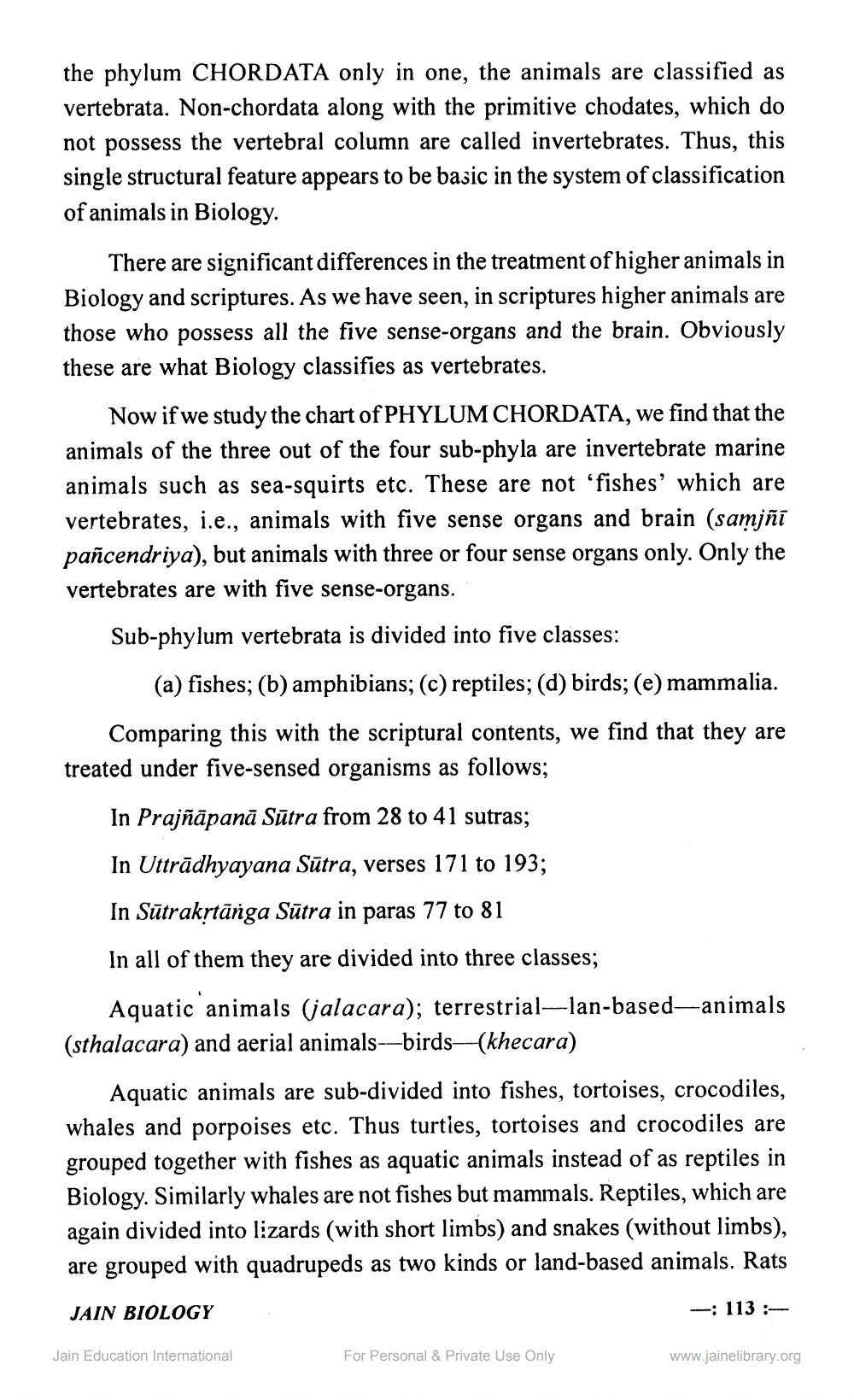________________
the phylum CHORDATA only in one, the animals are classified as vertebrata. Non-chordata along with the primitive chodates, which do not possess the vertebral column are called invertebrates. Thus, this single structural feature appears to be basic in the system of classification of animals in Biology.
There are significant differences in the treatment of higher animals in Biology and scriptures. As we have seen, in scriptures higher animals are those who possess all the five sense-organs and the brain. Obviously these are what Biology classifies as vertebrates.
Now if we study the chart of PHYLUM CHORDATA, we find that the animals of the three out of the four sub-phyla are invertebrate marine animals such as sea-squirts etc. These are not ‘fishes' which are vertebrates, i.e., animals with five sense organs and brain (samjñi pañcendriya), but animals with three or four sense organs only. Only the vertebrates are with five sense-organs.
Sub-phylum vertebrata is divided into five classes:
(a) fishes; (b) amphibians; (c) reptiles; (d) birds; (e) mammalia. Comparing this with the scriptural contents, we find that they are treated under five-sensed organisms as follows;
In Prajñāpanā Sūtra from 28 to 41 sutras; In Uttrādhyayana Sūtra, verses 171 to 193; In Sūtrakrtānga Sūtra in paras 77 to 81 In all of them they are divided into three classes;
Aquatic animals (jalacara); terrestrial-lan-based—animals (sthalacara) and aerial animals--birds-(khecara)
Aquatic animals are sub-divided into fishes, tortoises, crocodiles, whales and porpoises etc. Thus turties, tortoises and crocodiles are grouped together with fishes as aquatic animals instead of as reptiles in Biology. Similarly whales are not fishes but mammals. Reptiles, which are again divided into lizards (with short limbs) and snakes (without limbs), are grouped with quadrupeds as two kinds or land-based animals. Rats
JAIN BIOLOGY
-
113
Jain Education International
For Personal & Private Use Only
www.jainelibrary.org




